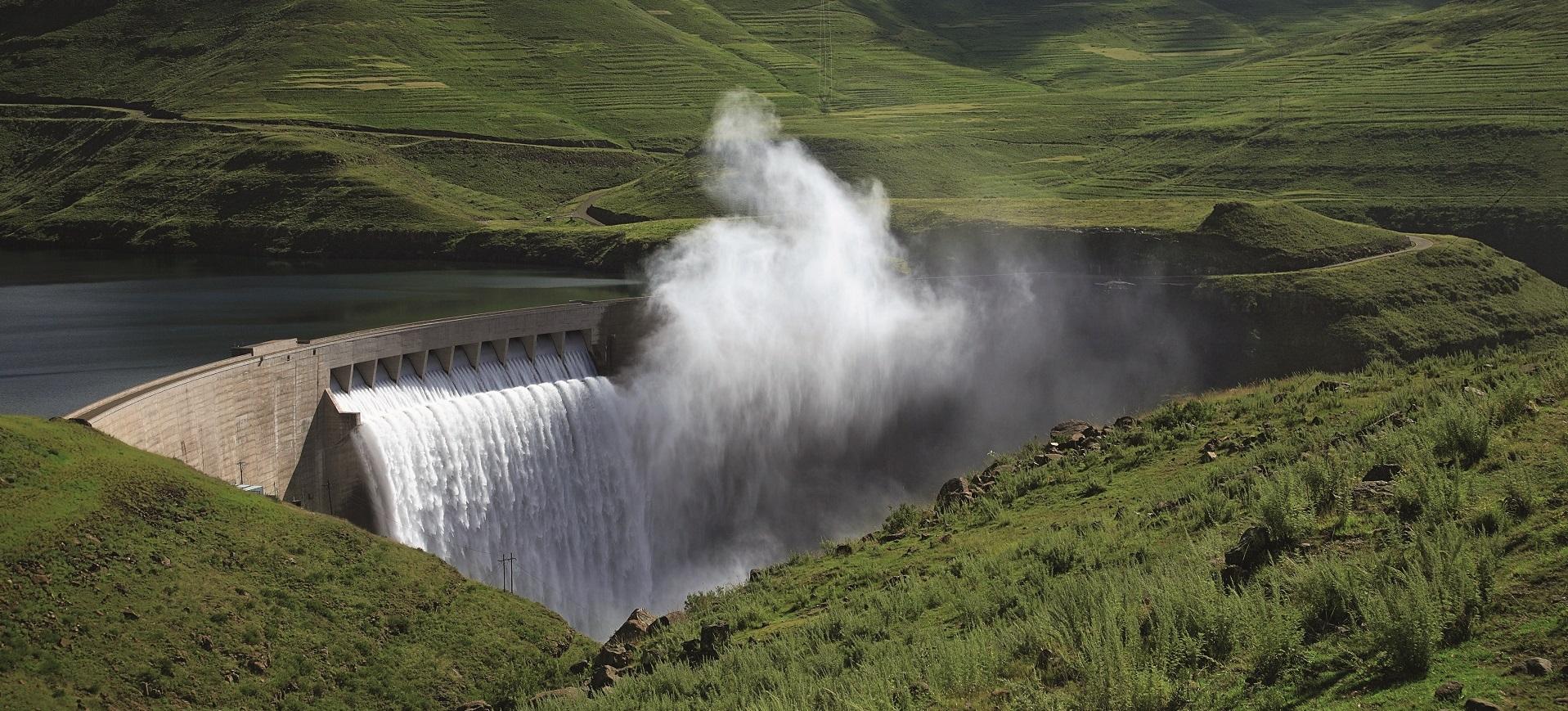Katse Dam

Katse Dam, 185 m high and with a total volume of 2.32 million m³, is one of the ten largest barriers in the world among double-curvature arch dams. Its reservoir has a capacity of 1,950 million m³ of water. The dam has a crest length of 710 m and a width of 60 m at the base and 9 m at the crest. The spillway is built into the dam crest and can release up to 6,250 m³/s. The river diversion was achieved with two tunnels, 643 m and 598 m long respectively, with a diameter of 7.5 m, and a rollcrete cofferdam 35 m high, 240 m long, with a volume of 90,000 m³.
The 2.5 million m³ of aggregates, taken from a nearby quarry, were transported from the primary and secondary crushing plants to the tertiary crushing plant on a continuous 2.4 km conveyor belt, which crossed the valley and passed through a 1.4 km tunnel built ad hoc. All the materials were delivered to the Katse dam site on the 150 km access road, via a mountain pass at an altitude of 3,090 m.
In addition to the benefits stemming from the exploitation of the energy produced and the water supply made available, the production of the dam allowed for the construction of access roads to the central plateaus, created a real communication network, and opened up a mountainous region of great beauty, until then practically inaccessible. Moreover, a special government fund fueled by the royalties accruing from the sale of water supports the local population by financing projects like the construction of hospitals, first aid centers and schools with plans for the development of domestic breeding, reforestation, and professional training courses.
Recognitions: completed after six years' work, Katse Dam received the SAICE National Award from the South African Institution of Civil Engineering "for the most outstanding civil engineering achievement in technical excellence for 1997".
Client: Lesotho Highlands Development Authority

Technical data
+ + +
m Height of dam
+ + +
m3 Earth excavation
+ + +
m3 Rock excavation
+ + +
m3 Underground excavation